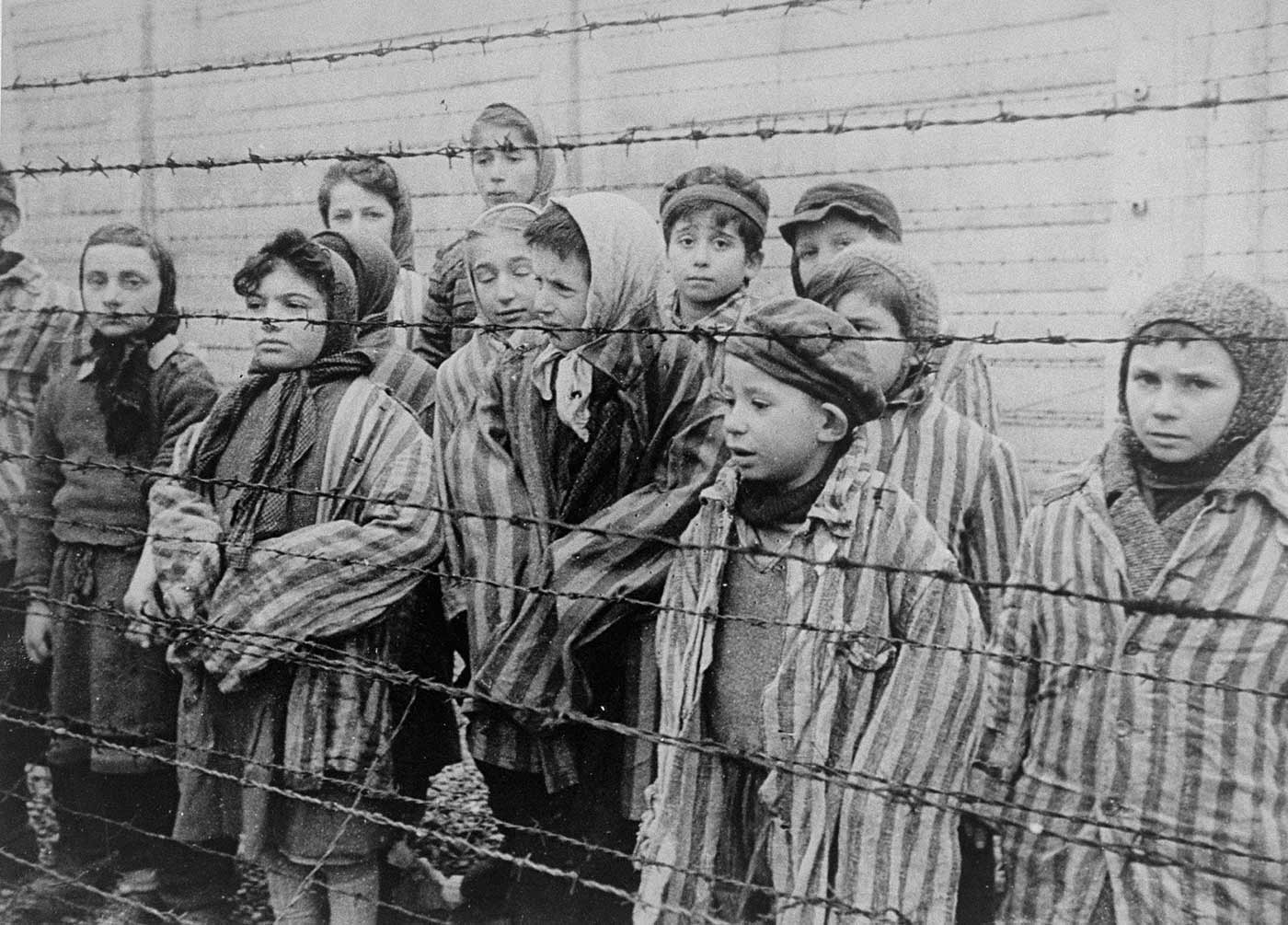Shocking Events That Will Make Your Jaw Drop In Disbelief - Unthinkable Disasters
There are many events that have taken place throughout history that have left people stunned and in disbelief. These events range from natural disasters to man-made disasters, from incredible achievements to terrible tragedies. Here are some of the most shocking events that will make your jaw drop in disbelief.
Author:Scarlet SunsetReviewer:Maxwell CanvasApr 25, 202329 Shares649 Views

There are many events that have taken place throughout history that have left people stunned and in disbelief. These events range from natural disasters to man-made disasters, from incredible achievements to terrible tragedies. Here are some of the most shocking events that will make your jaw drop in disbelief.
Shocking Events That Will Leave You Speechless
Check out these shocking events that will make your jaw drop in disbelief:
The Holocaust
The Holocaust was a period of genocide and persecution of Jews and other minority groups during World WarII, carried out by Nazi Germany and its collaborators. The Holocaust resulted in the deaths of an estimated six million Jews, as well as millions of other people, including Roma, disabled individuals, homosexuals, and political dissidents.
The Holocaust began in 1933 when Adolf Hitler and his Nazi Party came to power in Germany. The Nazi regime immediately implemented anti-Semitic policies and laws that marginalized and discriminated against Jews.
These policies included restricting Jewish employment, education, and access to public spaces. As Nazi aggression escalated and the war began, the persecution of Jews intensified, culminating in their systematic extermination.
The Nazis established concentration camps throughout Europe, where millions of Jews and other marginalized groups were imprisoned, forced to work, and subjected to torture and abuse.
These camps were designed to carry out mass murder, with gas chambers and crematoria used to dispose of the bodies. The most infamous of these camps was Auschwitz, where over a million people were murdered, the vast majority of them Jewish.
The Holocaust was not just a result of the actions of the Nazi regime, but also the complicity of many individuals and organizations, both within and outside of Germany.
Many people stood by and did nothing while Jews and other marginalized groups were targeted and persecuted. In addition, some individuals actively collaborated with the Nazis, either out of ideological alignment or in an effort to protect themselves.
The Holocaust was a catastrophic event in human history, one that has had far-reaching effects on the world. Its impact can still be felt today, as survivors and their families continue to grapple with the trauma and loss they experienced.
It serves as a reminder of the dangers of hate, intolerance, and prejudice, and the importance of standing up against injustice and oppression.
Fukushima Daiichi Nuclear Disaster
The Fukushima Daiichi nuclear disaster was a catastrophic event that occurred on March 11, 2011, in Japan. It was caused by a powerful earthquake and tsunami that struck the northeastern part of the country, leading to a meltdown of three nuclear reactors at the Fukushima Daiichi Nuclear Power Plant.
The earthquake, with a magnitude of 9.0, caused a massive tsunami that flooded the Fukushima Daiichi plant and its backup generators, leading to a loss of power and cooling systems. This resulted in the meltdown of the reactors, leading to the release of radioactive materials into the atmosphere and the surrounding environment.
The Fukushima disaster was the second-worst nuclear accident in history, after the Chernobyl disaster in 1986. It caused widespread environmental damage and human suffering, with tens of thousands of people being forced to evacuate their homes and communities.
The immediate aftermath of the disaster saw a massive cleanup and containment effort by the Japanese government and international organizations. The plant was eventually stabilized, but the environmental and health consequences of the disaster are still being felt today.
The release of radioactive materials into the environment led to the contamination of air, water, and soil in the surrounding area, and the effects of this contamination are still being studied. The disaster had a significant impact on the health of people in the region, with an increase in radiation-related illnesses being reported.
The disaster also had a significant economic impact on Japan, with the cost of cleanup and compensation reaching into the billions of dollars. The incident has raised questions about the safety of nuclear power and the ability of governments to manage the risks associated with such technology.
Challenger Space Shuttle Disaster
The Challenger Space Shuttle Disaster is one of the most well-known tragedies in American history. On January 28, 1986, the Space Shuttle Challenger broke apart just 73 seconds into its flight, killing all seven crew members aboard. The event shocked the world and raised many questions about the safety of space travel.
The Challenger mission was the 25th flight of the Space Shuttle program and was highly publicized due to the presence of Christa McAuliffe, a high school teacher who was selected to be the first private citizen to travel to space. The crew also included Francis R. Scobee, Michael J. Smith, Ronald McNair, Ellison Onizuka, Judith Resnik, and Gregory Jarvis.
The disaster occurred shortly after liftoff when a booster engine failed, causing one of the rocket boosters to break away and collide with the main fuel tank. This caused a massive explosion, and the shuttle broke apart in midair. The wreckage fell into the Atlantic Ocean, killing all seven crew members.
The cause of the disaster was later found to be a design flaw in the O-ring seals that were used to seal the joints of the rocket boosters. The O-ring seals failed to function properly due to the cold temperature at the time of the launch, which allowed hot gases to escape and ignite the fuel tank.
The Challenger disaster had a significant impact on the United States' space program. It led to a two-and-a-half-year hiatus in Space Shuttle flights while safety measures were reevaluated and implemented. It also prompted changes in NASA's management and safety procedures.
In addition, the Challenger disaster had a profound impact on the American public. The crew members, especially Christa McAuliffe, were seen as heroes, and their loss was felt deeply. The tragedy sparked a renewed interest in space exploration and raised many questions about the safety and risk associated with space travel.

Archival: Space Shuttle Challenger Disaster | NBC Nightly News
Titanic Sinking
The sinking of the Titanic is a tragic event that has captivated people's imaginations for over a century. The luxury liner, billed as "unsinkable," set sail on her maiden voyage from Southampton, England, to New York City on April 10, 1912, but just four days later, on April 14, the unthinkable happened.
The Titanic collided with an iceberg in the North Atlantic Ocean and sank, resulting in the deaths of more than 1,500 people.
The Titanic was one of the largest and most luxurious ships of its time, built to cater to the wealthy and elite. It was owned by the White Star Line and was captained by Edward Smith, a highly respected and experienced seaman. Despite warnings of icebergs in the area, the ship was traveling at high speed and did not take appropriate measures to avoid the iceberg.
The iceberg ripped a gash in the Titanic's hull, and water began pouring into the ship. Despite the efforts of the crew to contain the flooding, it was clear that the Titanic was sinking. There were not enough lifeboats to accommodate all of the passengers and crew, and the evacuation was chaotic and disorganized.
As the ship sank, many passengers and crew members were trapped below deck and were unable to escape. The freezing waters of the North Atlantic were lethal, and many who did manage to get into lifeboats died of hypothermia. The survivors were eventually rescued by the RMS Carpathia, which had responded to the Titanic's distress calls.
The sinking of the Titanic had a profound impact on the world, both at the time and in the years since. It was a tragedy that highlighted the dangers of hubris and the consequences of not heeding warnings. It also led to changes in the laws governing the safety of ships, and the development of new technologies for detecting icebergs and communicating with other ships.
In the years since the sinking of the Titanic, there have been numerous efforts to recover artifacts from the ship and to investigate the causes of the disaster. The story of the Titanic continues to fascinate people all over the world, and it remains a powerful reminder of the fragility of human life and the perils of overconfidence.
People Also Ask
What Was The Deadliest Natural Disaster In History?
The deadliest natural disaster in history was the 1931 China floods, which killed an estimated 1-4 million people.
What Was The Deadliest War In History?
The deadliest war in history was World War II, which resulted in an estimated 70-85 million fatalities.
What Was The Deadliest Pandemic In History?
The deadliest pandemic in history was the Spanish flu of 1918-1919, which infected an estimated 500 million people and resulted in 50 million to 100 million deaths.
What Was The Deadliest Mass Shooting In US History?
The deadliest mass shooting in US history was the 2017 Las Vegas shooting, which resulted in 59 deaths and over 800 injuries.
Conclusion
These shocking events that will make your jaw drop in disbelief are just a few examples of shocking events that have occurred throughout history. Each one has left people stunned and in disbelief, and they serve as a reminder of the fragility of life and the unpredictability of the world we live in.

Scarlet Sunset
Author
Scarlet Sunset is a captivating and confident transgender individual who radiates sensuality and embraces her unique beauty. With a radiant smile and a touch of red lipstick, she captivates hearts by the poolside as the sun dips below the horizon, casting a warm glow on her unforgettable presence.
Despite societal norms and expectations, Scarlet celebrates her body, proudly defying conventional standards of beauty. Her curves tell a story of self-acceptance and empowerment, challenging stereotypes and inspiring others to embrace their own bodies without reservation.

Maxwell Canvas
Reviewer
Maxwell Canvas, a charismatic and fearless crypto evangelist, defies conventions and blazes a trail in the realm of digital currencies. With his unique physique serving as a symbol of resilience, he challenges societal norms and proves that true expertise transcends appearances. Against a backdrop of a blurred and ever-shifting market, Maxwell's work becomes a masterpiece, painting a vivid picture of knowledge and inspiration.
With unwavering passion, Maxwell empowers others to embrace the transformative potential of blockchain technology. His captivating presence and unyielding dedication captivate audiences, turning skepticism into curiosity and igniting a spark of interest in the world of cryptocurrencies. Maxwell Canvas stands as a visionary force, leaving an indelible mark on the crypto landscape, inspiring others to explore decentralized possibilities and embrace a future of innovation and financial empowerment.
Latest Articles
Popular Articles
